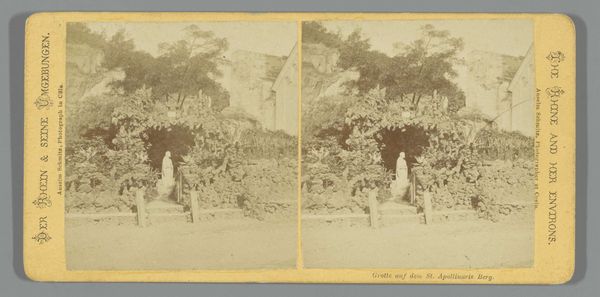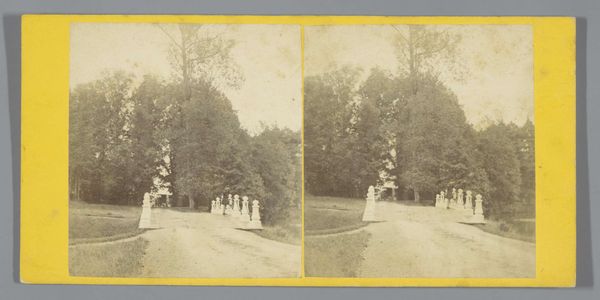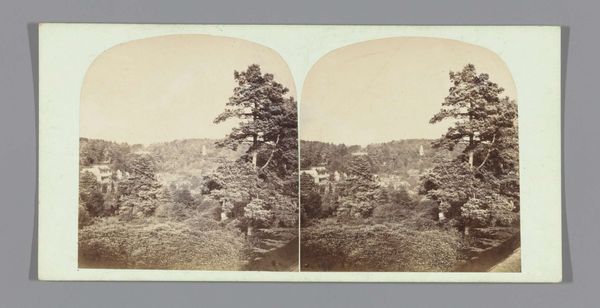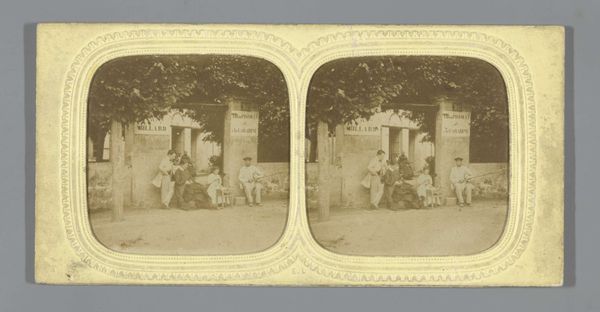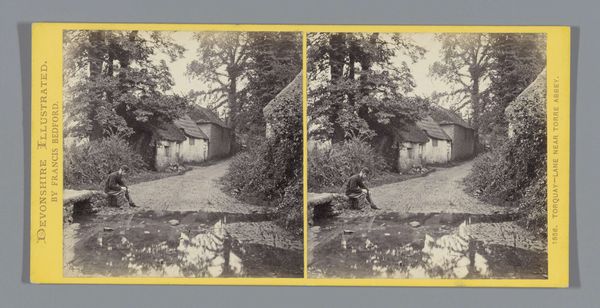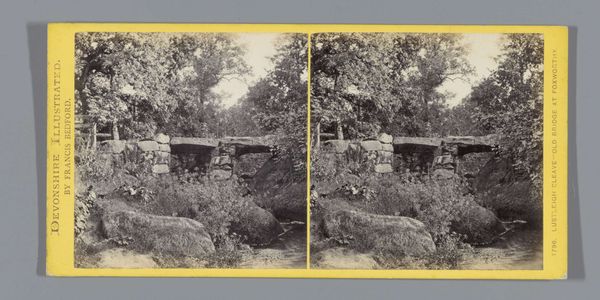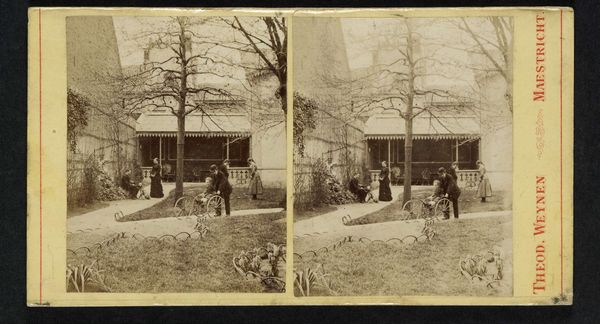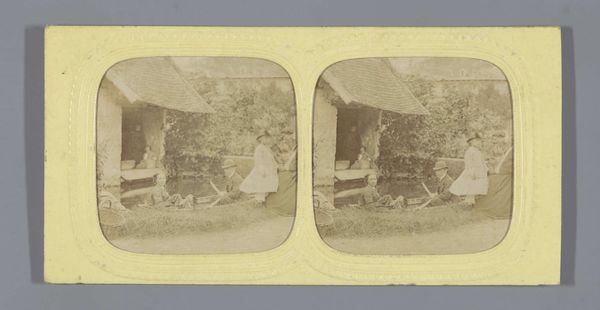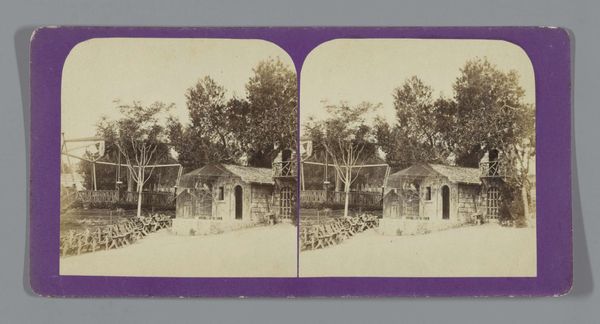
Dimensions: height 83 mm, width 172 mm
Copyright: Rijks Museum: Open Domain
Curator: Looking at this gelatin-silver print dating from 1860 to 1885, titled "Gezicht op Kraantjelek in Overveen," by Pieter Oosterhuis, what stands out to you initially? Editor: There's a stillness, a kind of quiet melancholy about it. It’s desaturated in a way that evokes a certain period. A lone figure in the lower center enhances that sense of solitude, don’t you think? Curator: Absolutely. Considering Oosterhuis’s use of the gelatin-silver process, it's interesting how it enabled sharper details than earlier photographic methods. You can see it in the individual leaves and the texture of the building. How do you see this technical precision informing the piece's overall reception in its time? Editor: Given photography's rising popularity in the 19th century, especially among the bourgeoisie, a scene like this would’ve spoken to ideas of leisure and the appreciation of the Dutch landscape. Its reproduction in a stereoscopic format speaks to this democratizing impulse too. These images, displayed as viewing cards, could easily become parlor entertainment. Curator: Indeed, but the labor behind it all... Producing gelatin-silver prints involved complex chemical processes, from preparing the emulsion to printing and developing the image. This wasn't accessible to everyone, creating a social divide in who could be a producer versus a consumer of photographic images. What do you make of that tension? Editor: That tension underscores how photography, while seemingly objective, was always embedded in social hierarchies. Think of who's being depicted, what stories are being told through this emerging medium, and who is controlling the means of production and display. The institutional support, or lack thereof, also dictated which photographers got recognition. Curator: Precisely. Seeing “Gezicht op Kraantjelek in Overveen" today at the Rijksmuseum forces us to consider how institutions shape our understanding and appreciation of artworks from different eras. We inevitably impose contemporary values on historical images, no? Editor: Of course. By examining who gets remembered and how, museums play an active role in constructing the historical narrative, often prioritizing certain stories while marginalizing others. So it really invites the viewers to be critically aware of what these photograph representations reveal. Curator: A worthy reflection to bear in mind, offering further layers of contemplation. Editor: Agreed. Thank you.
Comments
No comments
Be the first to comment and join the conversation on the ultimate creative platform.
